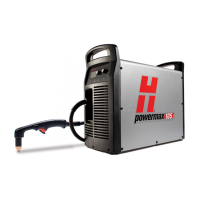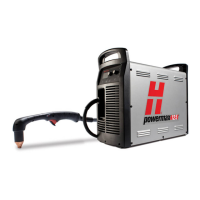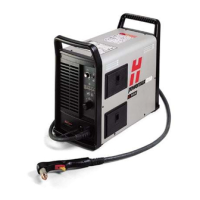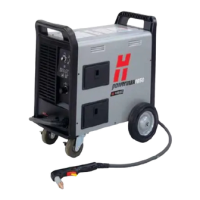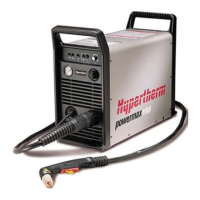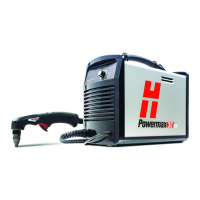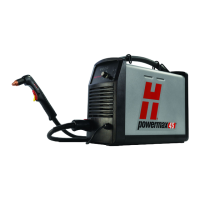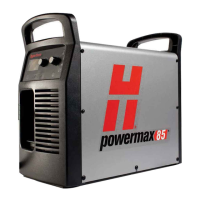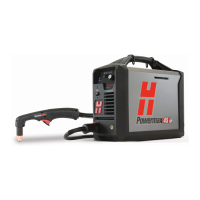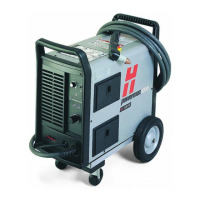MAINTENANCE
3-16 powermax1000 Service Manual
1
Problem This may mean Cause Solution
Arc lost contact with the
workpiece.
Faulty work lead, work lead connection,
or connection between the work lead
and cutting table.
Check the physical condition of the work lead. Check for loose
connections at the clamp and power supply. Reposition work lead
directly to the work piece. If the problem goes away, clean the cutting
table.
Fan could be loading down the Flyback
circuit.
Disconnect J1 and perform Test 6. If the voltage values are correct,
run with the fan disconnected. If system runs fine until the system
reaches over-temperature, replace the fan.
Worn consumables. Worn-out consumables. Replace consumables.
Improper air pressure setting or
low flow.
Insufficient supply or air leak on supply
line.
Turn the current adjustment knob to test flow and set the pressure
regulator to 70 psi (4.7 bar) for cutting or 50 psi (3.4 bar) for gouging.
If unable to adjust to the proper setting, check external air supply.
Poor quality air. Moisture or contaminates in air supply.
Add appropriate filtration and purge the lines with nitrogen to flush out
oil and moisture.
Insufficient input power (Low
voltage and fault LEDs may not
illuminate).
Undersized electrical supply
installation:
- Breaker or fuse
- Supply wire
- Extension cord
Verify that external electrical power is installed according to the
specifications in Section 2. Check the input voltage while trying to fire
the torch. A voltage drop indicates an undersized electrical supply
installation.
Inverter fault or interlock. Power board (PCB2) failure.
Check the fault LEDs on the back of the control board (see
Control
Board LEDs
). If "IF" is illuminated, disconnect J5 and place a jumper
between pins 1 and 2 on power board (PCB2). If the error clears,
replace the power switch (S1). If not, perform Test 5. If one of the two
tests fails, replace the power board and inverter IGBT (Q6).
Capacitor voltage imbalance
(C94/C98).
Faulty resistors on power board
(PCB2).
Perform Test 2 while trying to fire the torch. If voltage across the
capacitors is not balanced, then replace the power board (PCB2).
Poor work lead connection.
Verify that the work lead is attached to workpiece and the workpiece
is free of rust, paint, or other coatings.
Check the resistance across the work lead. If the resistance is greater
than 3 ohms, replace or repair as required.
Defective pilot arc IGBT (Q8).
Turn power OFF, remove consumables, and check resistance
between the plunger and the work piece. If the resistance is less than
5k ohms, check the resistance across the pilot arc IGBT (two screws
on Q8). If resistance is less than 5k ohms, replace the pilot arc IGBT.
Defective control board (PCB3). Replace the control board.
Arc goes out while cutting or
intermittently will not refire.
When pressing torch trigger or start
switch, pilot arc starts but then
extinguishes before the normal 5-
second time-out period. Fault LEDs
may illuminate.
Machine will not cut material well
(does not appear to be operating at
full cutting power), and the arc does
not time out after 5 seconds.

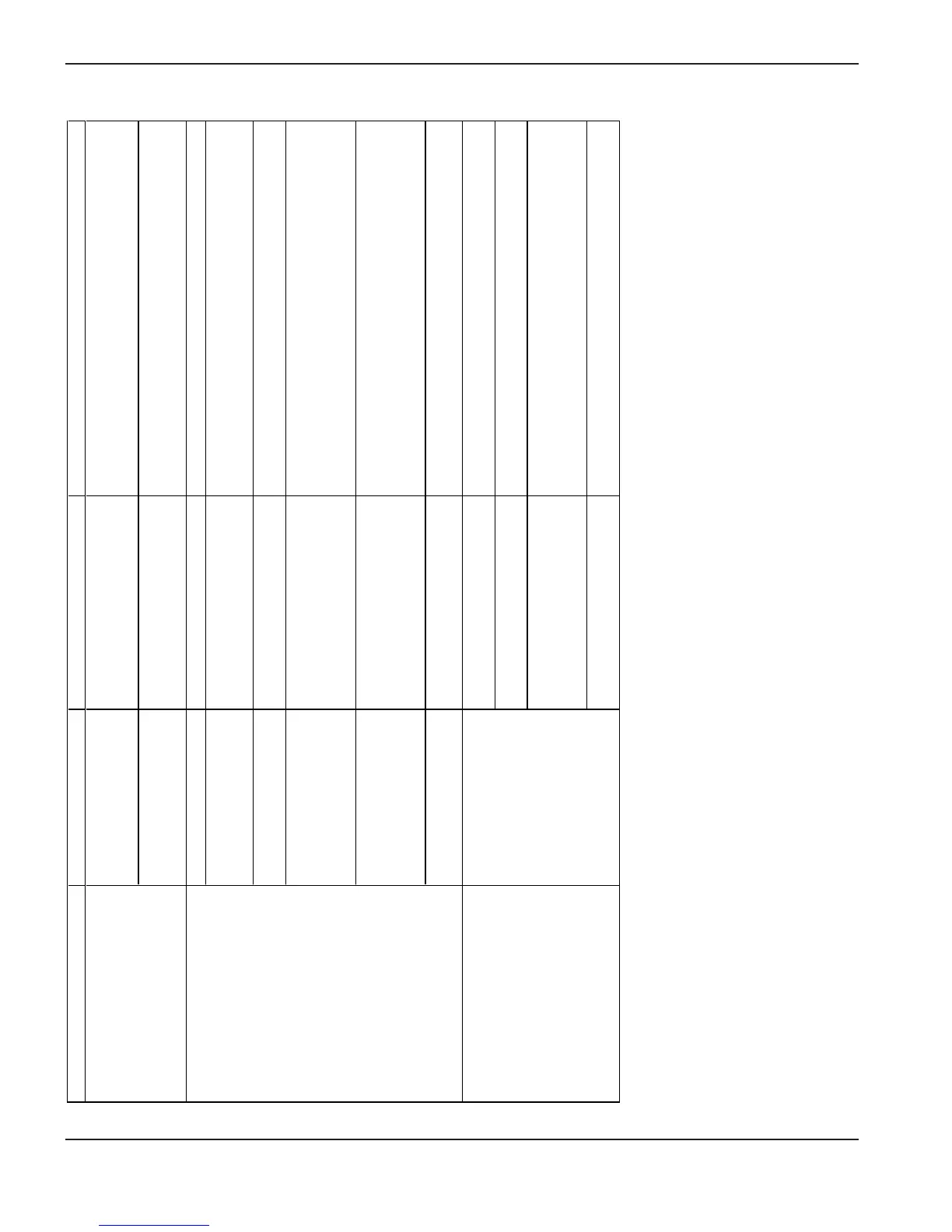